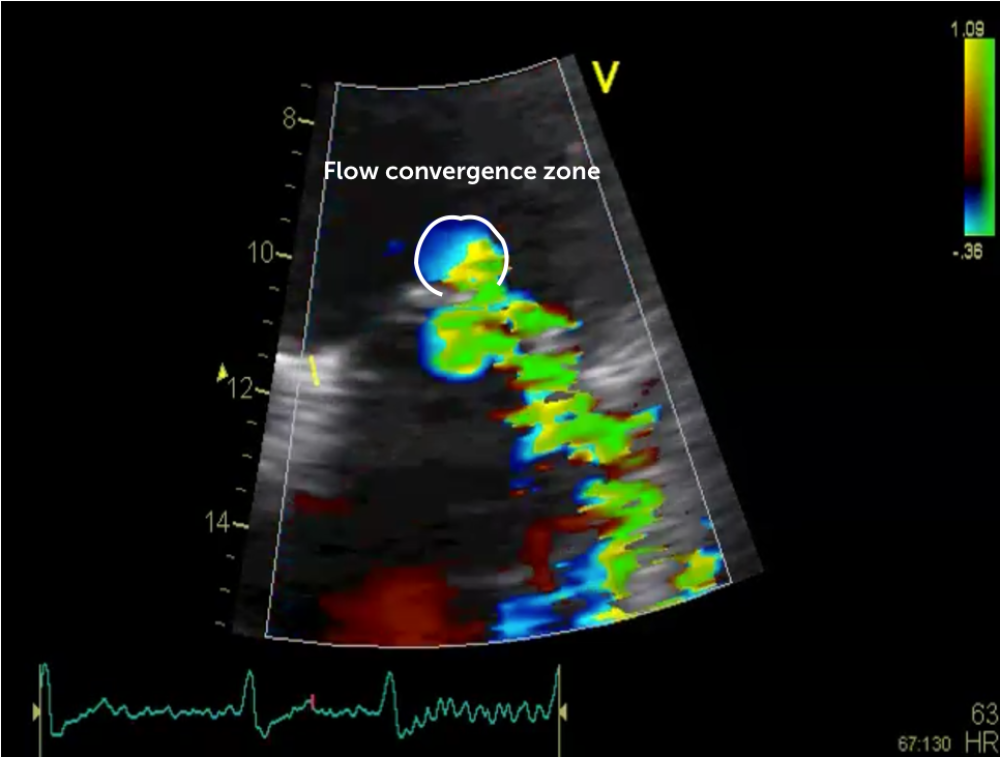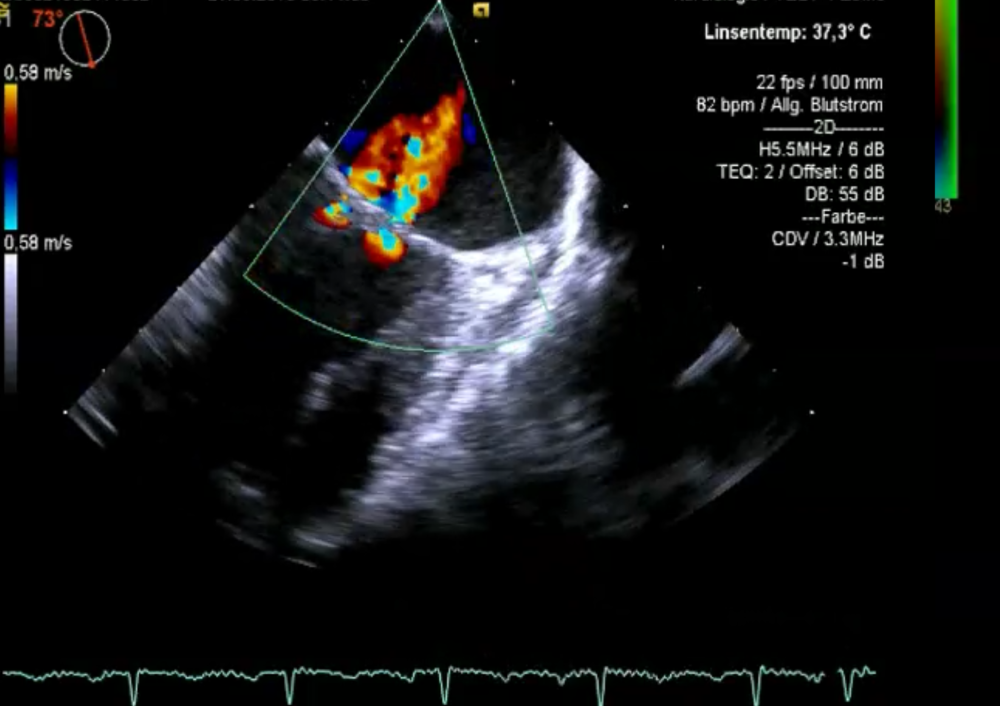Should I use the “PISA” Method to quantify mitral regurgitation?
We all hate uncertainties and love numbers, which give us more guidance. This is the main reason the PISA method of quantifying mitral regurgitation appears so attractive. But should we use it in clinical practice?
What is the PISA method?
PISA, short for Proximal Isovelocity Surface Area, describes a hemodynamic principle that all of you have encountered in some way or another.

If you open the plug of your sink or bathtub, you will note that the water swirls towards the opening. There is a "convergence" of flow towards the drain. Now place a rubber duck in the water. You will see that the speed with which the duck is "pulled" towards the drain increases the closer it gets. (We speak of so-called velocity shells. The velocities at the surface of each shell are the same. The velocity increases as it gets closer to the hole).
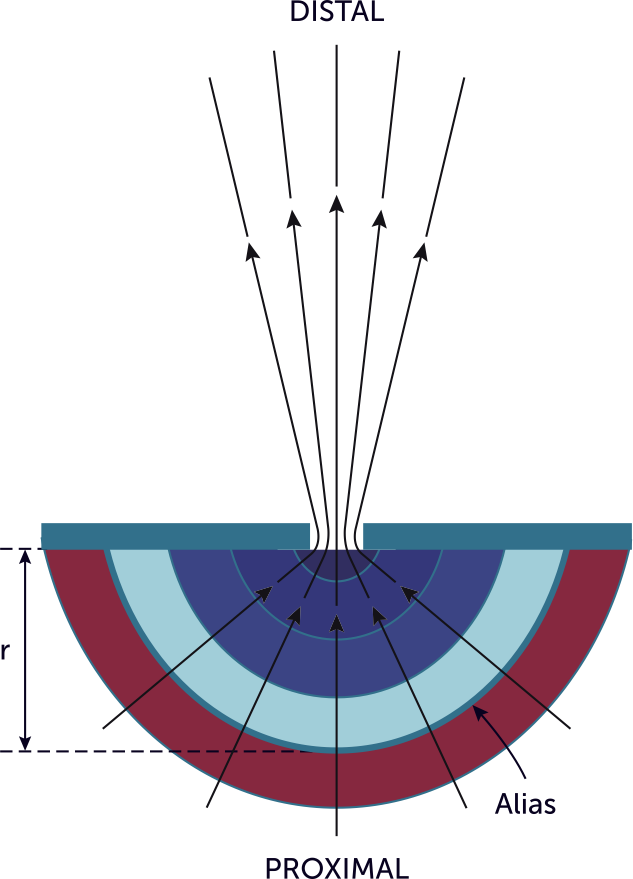
The PISA principle states two things: 1) Velocities at a given distance from the orifice are equal 2) The larger the orifice is, the higher the velocities will be at a certain distance (radius) from the opening (This has to do with the conservation of mass principle). In other words, the larger the orifice is, the more flow convergence you will have.
But how does the PISA principle relate to regurgitation?
The mitral valve regurgitant orifice acts just like the opening in the bathtub. Knowing the magnitude of "flow convergence" allows you to calculate regurgitant flow, regurgitant volume, and the effective regurgitant orifice. In other words, you can quantify mitral regurgitation!
Here are the formulas we use to calculate these parameters:
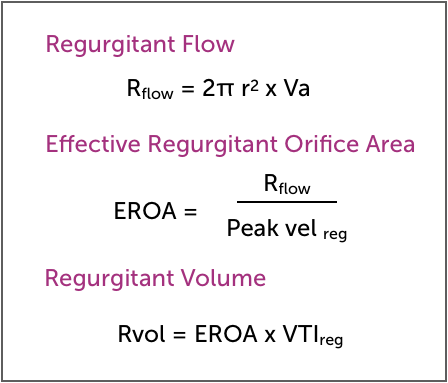
Based on the PISA method, which variables do you need to quantify mitral regurgitation?
To calculate the PISA parameters, you don't have to do the math. All scanners have the equations built into their measurement programs. But you will need to perform some measurements:
-
The size (radius) of the flow convergence zone (Color Doppler)
-
The velocity-time integral (CW Doppler)
-
The maximal MR velocity (CW Doppler)
So, in essence, all you need is a good color Doppler Image that depicts the flow convergence zone and a CW signal through the MR jet in an apical view.
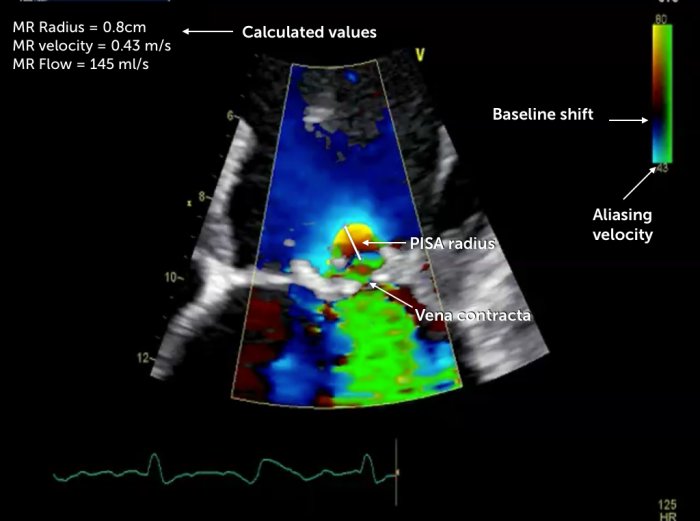
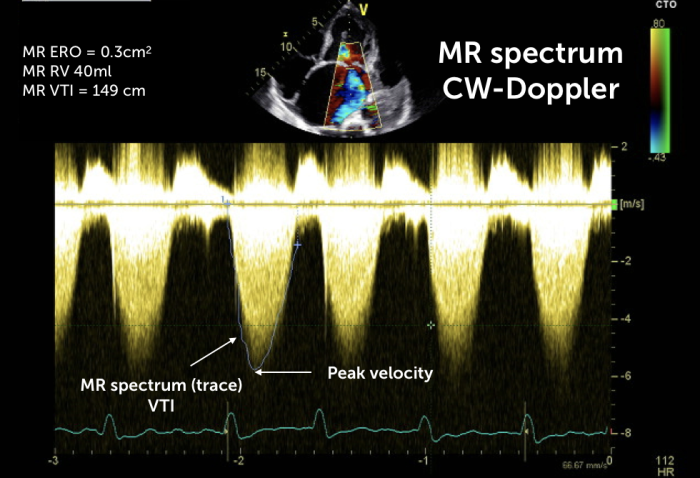
Which factors do I need to consider when I perform PISA measurements?
While this sounds quite simple, several "methodological" pitfalls can lead to significant over-or underestimating of mitral regurgitation. So here are some tips:
-
Make sure that you use the zoom function when you display the flow convergence
-
Adapt the PRF by moving the zero line down and the PRF velocity to a lower value of around 35 cm / s. (20-40cm/s). This will help you to delineate the flow convergence zone.
-
Use a mid-systolic frame where you see the maximal flow convergence zone.
-
Perform the measurements in both a 4 and 2 chamber view. In particular, if the size of the MR jet differs significantly between these two views.
Why should you be cautious when using the PISA method?
If you look at the physics and hemodynamics behind the PISA method, you might ask yourself: Why shouldn't we use the PISA in all our patients with mitral regurgitation? Wouldn't this solve the issue of quantification - once and for all?
The truth is: The PISA method has its problems and can lead to false results. Aside from the methodological issues, there are several other factors and pitfalls to consider:
-
The regurgitant orifice is usually not round. It might even be "bizarrely shaped". So measuring the flow convergence zone in one view might not be representative.
-
It is often difficult to measure the radius. For example, if the image quality is poor.
-
The PISA calculation doesn't work in eccentrically located flow convergence zones, which "impinge" on a wall. The radius is not only difficult to measure, but the hemodynamic conditions in this situation also differ from the PISA assumptions'.
-
In some patients, "regurgitant flow" changes during systole. Remember: Not all patients have holo-systolic mitral regurgitation. If this is the case, you will overestimate mitral regurgitation using the PISA method.

-
It is often difficult to get a good CW-Doppler spectrum if the jet is very eccentric (i.e., prolapse or flail leaflet). If the VTI or peak MR velocity is too low, you will underestimate mitral regurgitation.
-
The mitral valve plane (and the regurgitant orifice) moves throughout the cycle. This might also impact the flow velocities of the flow convergence zone.
-
There are numerous conditions where the degree of mitral regurgitation varies from beat to beat (i.e., atrial fibrillation); in these situations, you would need to perform several measurements in different beats and average these.
When should we use the PISA method then?
Here is my take:
-
Use the PISA method in scientific clinical studies. It is always good to have numbers to compare, but even here: also use other methods of quantification (i.e., visual assessment, Vena contracta measurements).
-
PISA method is great for following up patients with mitral regurgitation. Conditions such as location, eccentricity, and geometry of the jet /orifice will likely not change as much from one exam to the next. So in relative terms, the values will allow you to document "change."
-
Use it in ideal settings (holo-systolic jets, more or less round regurgitant orifice area, central non-eccentric jets.
Can the principle of flow convergence help in the quantification of mitral regurgitation?
While the PISA method has many limitations, and it might be challenging to calculate a reliable number for the degree of mitral regurgitation, the concept is still valid.
The presence and magnitude of the flow convergence zone should always be part of the visual (semi-quantitative) assessment of mitral regurgitation.

